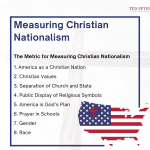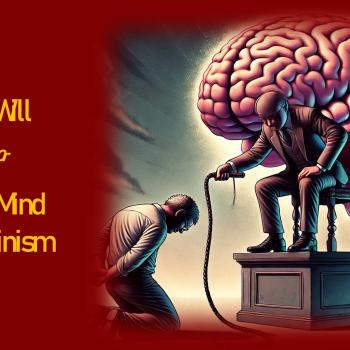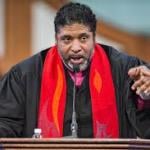What is the Trinity? Part 1
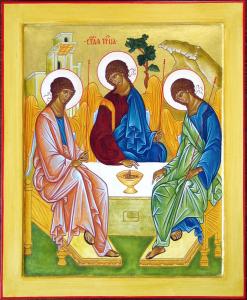
What is the Trinity? The Trinity is the Christian way to understand the one God who is creator, redeemer, and sanctifier. Simple, right? Nope. Get ready for some Daedalian complexity.
We’ve just passed Jesus’ Ascension in the liturgical year. With Trinity Sunday coming up the week after Pentecost, it’s the right time to think about God as Trinity and to construct our worldview accordingly.[1]
What is the Trinity? Is it a Mystery?
Be careful when you pick a mystery. Here’s one from the Catechism of the Catholic Church.
”The mystery of the Most Holy Trinity is the central mystery of Christian faith and life. It is the mystery of God in himself” (Vatican 2003, §234 ).
Now, does this mystery refer to the following unanswerable question: how can one be three while three is one? If this is your question, then there’s no mystery here. It’s only nonsense.
Because so many mistakenly think the mystery of the Trinity is about numbers, Dorothy Sayers (1893-1957) could not resist quipping: the doctrine of the Trinity speaks of “The Father incomprehensible, the Son incomprehensible, and the whole thing incomprehensible.”
Is there a genuine mystery here? Of course! Whenever God communicates, get ready for mystery. “The immediacy of God in his self-communication is precisely the revelation of God as the absolute mystery that remains such” (Rahner 1978, 120), Roman Catholic theologian Karl Rahner warns us.
The numbers one and three do not constitute the divine mystery. Dispel this from your mind. What we need to ponder is the dynamic perichoresis or circumincessio within divine life. That is, when God the Father sneezes, God the Son says, “Gesundheit.” Or, I wonder, does he say, “God bless you!”
What is the Trinity? Does the Bible answer this?
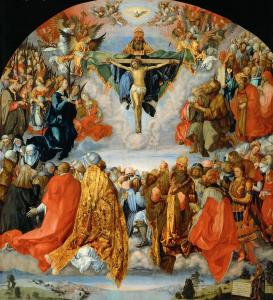
Is there a doctrine of the Trinity in the Bible? No. There are very few if any doctrines in the Bible. What the Bible provides in symbolic language are references to the God of Israel who transcends whatever we can say about the divine. Yet, that very God is present in what we say about the divine. That, curiously enough, is what we mean by “God’s Word.”[2]
The doctrine of the Trinity rises out of some New Testament puzzles. On the one hand, Jesus prays to God as Father. Take the Lord’s Prayer, for example. Jesus opens with “Our Father in heaven…”(Matthew 6:9). From such a prayer one might conclude that the Father and the Son are two different persons. On the other hand, Jesus identifies totally with the Father. “I and the Father are one” (John 10:30). Now, put those together, if you can.
During the missionary command Jesus asks us to baptize in the name of the Father, Son, and Holy Spirit (Matthew 28:19). Did Jesus think of God as Trinity?
The task of the theologian is to put various symbolic utterances about God together in a package that makes coherent sense. This is where the birth pangs of Trinitarian theology impel doctrinal upbringing.
The Son self-differentiates from the Father
Here’s how German Lutheran Wolfhart Pannenberg (1928-2014) begins describing the dynamics of God’s intra-trinitarian life. “The self-differentiation of the Son from the Father on the one side and the Spirit on the other forms a basis for the thesis that there is a threefold distinction in the deity” (Pannenberg, Systematic Theology, 1:272). In eternity, the 2nd Person self-differentiates from the 1st Person, establishing what we symbolically call a Father-Son relationship.
Is there literally a Father and literally a Son? No. The Father and Son relationship we know on earth provides the model or analog for how we describe the diremption within the divine life.
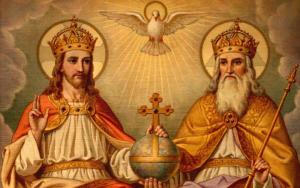
The split takes place in part because God has decided to create a world that is not-divine. The 2nd Person is also called the Logos, recall. This means that the Son is the word that organizes all creation from electrons to galaxies according to the very rational principles scientists employ to study them. The Son or Logos, then, constitutes the means whereby self-differentiation within the divine life makes possible the creation of a world that is distinguishable from its divine source. The Son or Logos represents both the creator and what is created.
What glue will hold together this split between the first two persons? Answer: a third person. Who is that? The Holy Spirit. The Holy Spirit provides the love that binds together Father with Son.
Following Augustine, Katherine Sonderegger at Virginia Theological Seminary explicates this logic in light of the divine names. “Father entails Offspring: Son. Son necessarily implies Parent: Father. We cannot have One without the other….They oppose one another” (Sonderegger 2020, 2:524). How is this opposition overcome? By the love of the Holy Spirit. “The Spirit is that Gift, that Love” (Sonderegger 2020, 2:527). Hence, in his De Trinitate, Augustine models the divine three as Lover, Beloved, and Love.
Whenever God communicates to you or me or any earthly creature, that communication will come from one or another of the three persons. “The one God is personal only with regard to the concreteness of his trinitarian life in the interactions of Father, Son, and Spirit.” (Pannenberg, An Introduction to Systematic Theology 1991, 26). We do not share a personal relationship with God in the vague sense of the divine oneness. Rather, God communicates as Father, Son, or Holy Spirit.
Misunderstanding God’s Simplicity
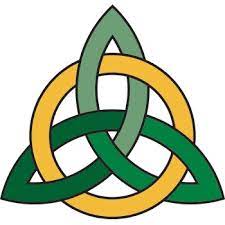
God is simple, says Reformed theologian Kevin DeYoung. God does not have attributes; God is God’s attributes. God does not have justice or love; God is justice and love. Every attribute of God is identical with his essence. In short, what we call “God” is not made up of moving parts. Now, does this make sense?
The well-meaning Pastor DeYoung wants to inspire us to worship the sublime God. Thank you, Pastor DeYoung. But, in my view, DeYoung makes impossible a coherent explication of God as Trinity. Here’s what DeYoung says about the Trinity: “the simplicity of God (the idea that God is not the composite of parts and that whatever each Person is singly, the whole Trinity is together).” How coherent is this? Some Reformed theologians identify difficulties with insistence on such divine simplicity. Ryan Mullins, for example, says that simplicity makes the Trinity impossible.
God is complex. Not simple. When explicating God’s self-revelation, Reformed Titan Karl Barth begins with God as Trinity embedded already in God’s Word. “This one God is God three times in different ways, so different that it is only in this threefold difference that He is God, so different that this difference, this being in these three modes of being (Seinsweise), is absolutely essential to Him, so different, then, that this difference is irremovable” (Barth, I/1: §9: 360).[3]
The answer to the question — What is the Trinity? — must include ascribing to God complexity, dynamism, and life. Unity, yes. Simplicity, no. That’s what I conclude.
Conclusion
Christians think of God as Trinity because our encounter with the one God has taken place through three different persons. But each person is not autonomous. The only persons we know on earth or in heaven are persons-in-relationship. In fact, according to Alfred North Whitehead, our modern secular notion of person is derived from trinitarian theology sixteen hundred years ago. The Nicene discussion of the three divine persons has indirectly provided us in the modern world with our understanding of personhood. Human personhood is derived from trinitarian personhood.
Christians are confident that there is one and only one God, to be sure. Yet, this one God is not simple. God is complex. And God in Godself is dynamic, in movement, living.
There is more to our answer to the question, What is the Trinity? Get ready to click on Rahner’s Rule to examine the relationship between the immanent and the economic Trinity.
ST 2017 What is the Trinity? Trinity Part 1
ST 2017 What is the Trinity? Trinity Part 1
ST 2018 What is Rahner’s Rule? Trinity Part 2
ST 2019 Islam on the Trinity? Trinity Part 3
▓
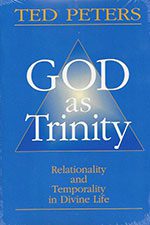
For Patheos, Ted Peters posts articles and notices in the field of Public Theology. He is a Lutheran pastor and emeritus professor at the Graduate Theological Union. He co-edits the journal, Theology and Science, with Robert John Russell on behalf of the Center for Theology and the Natural Sciences, in Berkeley, California, USA. His single volume systematic theology, God—The World’s Future, is now in the 3rd edition. He has also authored God as Trinity plus Sin: Radical Evil in Soul and Society as well as Sin Boldly: Justifying Faith for Fragile and Broken Souls. See his website: TedsTimelyTake.com.
▓
Notes
[1] According to Fred Sanders at Biola University, the doctrine of the Trinity provides systematic theology with its norm. “First, trinitarian theology summarizes the biblical story. Second, it articulates the content of divine self-revelation by specifying what has been revealed. Third, it orders doctrinal discourse. Fourth, trinitarian theology identifies God by the gospel. And fifth and cumulatively, it informs and norms soteriology” (Sanders, 2021, 30).[2] Is the doctrine of the Trinity extra-biblical? By no means! At least according to Fred Sanders. “Trinitarian theology is a pan-biblical summarizing doctrine that reads the entire economy of salvation as one integrated act of God for which he is to be praised … Trinitarian theology is a confession that in the fullness of time, the Father sent the Son and the Holy Spirit because in the fullness of eternity God is the Father, Son, and Holy Spirit. It retrieves divine identity from the divine economy” (Sanders, 2021, 285). Karl Barth, in modest contrast, distinguishes proto-trinitarian biblical symbology from its post-biblical explication in doctrinal form by the Church.
“The Bible does not state expressly that the Father, Son, and Holy Ghost are of equal essence and are thus in the same sense God Himself. Nor does it state expressly that thus and only thus, as Father, Son, and Holy Ghost, God is God. These two express declarations, which go beyond the witness of the Bible, are the twofold content of the Church doctrine of the Trintiy” (Barth 1936-1962, I/1: §9: 381).
I like the way Evangelical systematic theologian Roger Olson puts it in Patheos. “The doctrine of the Trinity is a product of theology, of theologizing. It did not simply fall out of the Bible.”
[3] Despite Barth’s use of the term, Seinsweise (mode of being), Barth does not endorse Modalism (Barth, I/1: §9: 360). Faithful Barth explicator, George Hunsinger, makes this point with emphasis. “Nothing could be more superficial than to accuse Barth of modalism for this choice”(Hunsinger, 301).References
Barth, Karl, 1936-1962. Church Dogmatics, 4 Volumes. Edingburgh: T. & T. Clark.
Hunsinger, George, 2011. “Karl Barth’s Doctrine of the Trinity and some Protestant Doctrines after Barth,” The Oxford Handbook in the Trinity. Eds., Gilles Emery, O.P. and Matthew Levering. Oxford: Oxford University Press, 294-313
Kolb, Robert and Timothy Wengert, eds. 2000. The Book of Concord. Minneapolis MN: Fortress.
LaCugna, Catherina Mowry. 1991. God For Us. New York: Harper.
Largen, Kristin. 2021. “Plurality and Salvation: Possibilities in Pannenberg’s Soteriology for Comparative Theology.” In The Enduring Promise of Wolfhart Pannenberg, by ed Andrew Hollingsworth, 183-200. Lanham MA: Lexington.
Moltmann, Jűrgen. 1974. The Crucified God. New York: Harper.
Pannenberg, Wolfhart. 1991. An Introduction to Systematic Theology. Grand Rapids MI: Wm. B. Eerdmans.
—. 1991-1998. Systematic Theology, 3 Volumes. Grand Rapids MI: Wm B Eerdmans.
Peters, Ted. 1993. God as Trinity. Louisville KY: Westminster John Knox.
Rahner, Karl. 1978. Foundations of the Christian Faith. New York: Seabury Crossroad.
—. 1997. The Trinity. New York: Herder.
Sanders, Fred, 2021. Fountain of Salvation: Trinity and Soteriology. Grand Rapids MI: Eerdmans.
Sonderegger, Katherine, 2015, 2020. Systematic Theology. 2 Volumes: Minneapolis MN: Fortress.
Vatican. 2003. “Catechism of the Catholic Church.” https://www.vatican.va/archive/ENG0015/__PX.HTM.



